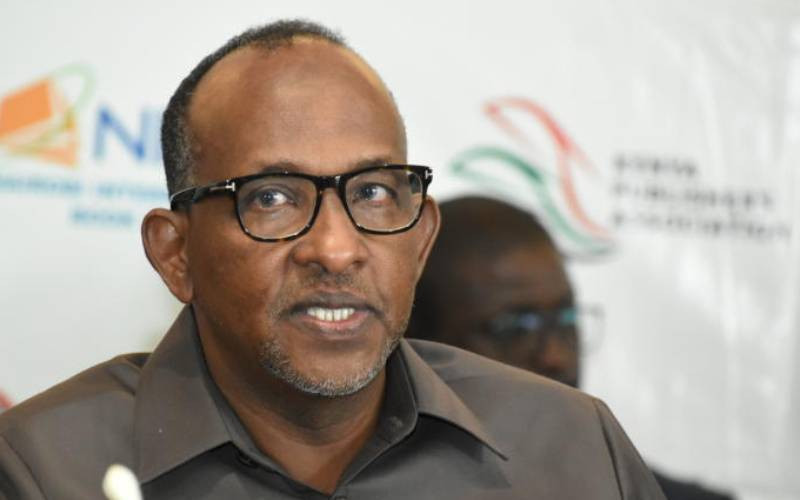By Wangeci Kanyeki
Behind the foliage and the hum of traffic on Museum Hill, Nairobi National Museum stands resolute, within it a glimpse of the country’s heritage.
Through the branches, the museum overlooks the city, only a few minutes away, as if recording everything for posterity. A walk through the exhibits feels both exciting and a little cold, even eerie, the stuffed animals ever watchful.
The construction of the museum was initiated in 1910 by the East African Natural History Society, currently Nature Kenya.
The group consisted mainly of colonial settlers and naturalists who needed a place to keep and preserve their collections of various specimens.
First site
Its first site was where Nyayo House is today. At the time, the museum was a small stone building and the construction was funded partly by Alidina Visram and the society members’ contributions.
It was established for the purpose of studying the natural history of the East African region as well as the general way of life of the indigenous communities living in the region including the study of prehistoric people who may have lived in the region.
The site soon became too small and by 1922/1923, the society had grown to a level strong enough to be felt by the colonial government. The society successfully lobbied the government for a piece of land to build a bigger building.
They got the land and built the museum on the corner of Kenyatta Avenue-Kirk Road (Nyerere Avenue) where the Nairobi Serena Hotel now stands.
Named after governor
According to the Directorate of Museums Sites & Monuments of the National Museums of Kenya, Sir Robert Corydon, the then Governor of Kenya, died in 1928 and the society decided to build a museum as memorial to him.
In 1929, the colonial government set aside land at Museum Hill and construction work started at the present site.
At the time, the first director (then curator) of the museum, Dr V G L Someren was appointed in 1929. The building was completed and officially opened on September 22, 1930 and named Coryndon Museum in honour of Sir Robert Coryndon, one time Governor of Kenya and a staunch supporter of Uganda Natural History Society.
On the attainment of independence in 1963, it was re-named the National Museums of Kenya with Nairobi Museum taking the role of exhibiting Kenya’s heritage to the various publics.
Stay informed. Subscribe to our newsletter
According to National Museums of Kenya Public Relations officer Juliet Jebet, the Nairobi Museum closed its doors to the public in October 15, 2005 for a highly intensive refurbishment and expansion of its facilities.
Refurbishment
The change was financed by European Union to the tune of Sh800 million within the framework of National Museums of Kenya Support Programme.
The project embarked on the refurbishment and expansion of Nairobi Museum as well as organisational restructuring and was completed at the end of 2007.
After the facelift, the museum was officially opened on July 14, 2008 by former President Mwai Kibaki as the Nairobi National Museum.
Triad Architects Limited designed and added a key component of the master plan with a design for a visitor’s centre, which provides facilities for visitors such as a new ticketing office, cafés and shops.
A dinosaur monument that stands on the driveway at the museum was done in 1993 by a sculptor by the name Bwire, now deceased.
The architecture is majestic, artistic and impressive and befits being the national custodian of Kenya’s natural and cultural heritage.
 The Standard Group Plc is a
multi-media organization with investments in media platforms spanning newspaper
print operations, television, radio broadcasting, digital and online services. The
Standard Group is recognized as a leading multi-media house in Kenya with a key
influence in matters of national and international interest.
The Standard Group Plc is a
multi-media organization with investments in media platforms spanning newspaper
print operations, television, radio broadcasting, digital and online services. The
Standard Group is recognized as a leading multi-media house in Kenya with a key
influence in matters of national and international interest.
 The Standard Group Plc is a
multi-media organization with investments in media platforms spanning newspaper
print operations, television, radio broadcasting, digital and online services. The
Standard Group is recognized as a leading multi-media house in Kenya with a key
influence in matters of national and international interest.
The Standard Group Plc is a
multi-media organization with investments in media platforms spanning newspaper
print operations, television, radio broadcasting, digital and online services. The
Standard Group is recognized as a leading multi-media house in Kenya with a key
influence in matters of national and international interest.








